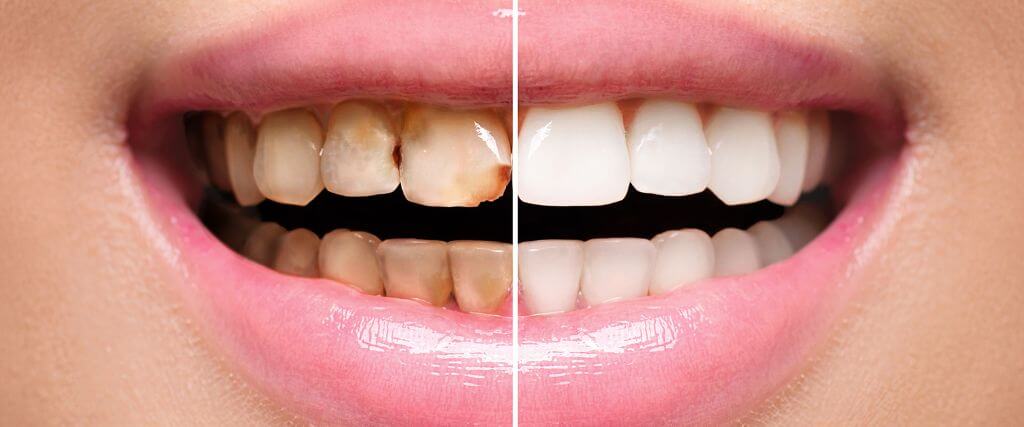Imagine the excitement of unveiling your brand-new smile. Perhaps a chipped tooth had been hiding your confidence for years, or a missing tooth had made eating a challenge. Whatever the reason, your dental restoration has not only transformed your smile but also boosted your self-esteem, making you feel ready to take on the world. However, just as a beautiful garden requires ongoing care to thrive, your restored smile needs attention to maintain its brilliance and function.
Modern dentistry offers a range of restoration options, including fillings, crowns, veneers, and implants. Each procedure is designed to address a specific dental issue, improving both the aesthetics and functionality of your smile. The good news is that with the right care, your dental restorations can last for many years, allowing you to enjoy the benefits of your refreshed smile for a long time. Let’s explore some strategies to help ensure your restored teeth stay healthy and continue to brighten your smile!
Brushing and Flossing: The Foundation of a Lasting Smile
Just because your restored teeth aren’t your natural ones doesn’t mean they deserve any less attention! In fact, maintaining a meticulous oral hygiene routine is even more crucial for these teeth. Plaque and tartar buildup can still occur around restorations, leading to decay and potentially compromising the longevity of the restoration itself.
Invest in a soft-bristled toothbrush. Harsh bristles can scratch the surface of some restorations, so stick with a toothbrush that’s gentle on both your teeth and restorations.
Brush twice a day for at least two minutes using a gentle, circular motion and tilting the toothbrush 45 degrees along your gums. This ensures you’re cleaning both the surface of the tooth and the area where the restoration meets the gum tissue. Don’t forget the chewing surfaces. Give them a good scrub, too!
Don’t forget about flossing, which is just as important for restored teeth as it is for natural ones. Plaque and food particles can lodge beneath restorations, creating a breeding ground for bacteria.
There are different flossing methods to choose from. Traditional string floss can be effective, but water flossers can be particularly helpful for reaching under restorations and between teeth. Experiment to find what works best for you.
Dietary Strategies for Smile Longevity
The old adage, “You are what you eat,” certainly rings true when it comes to your dental health. Just like a car needs the right fuel to run smoothly, your restored smile thrives on a diet that nourishes your teeth and gums.
Foods to embrace include:
- Nature’s Powerhouse: Fruits and vegetables contain vitamins and minerals that contribute to healthy teeth and gums. Think crunchy apples, leafy greens, and colorful bell peppers. Not only are they delicious, but they also help stimulate saliva production, which naturally cleanses your mouth.
- Calcium Champions: Dairy products like cheese and yogurt are excellent sources of calcium, a vital mineral for maintaining strong tooth structure. Strong teeth are less susceptible to chipping or cracking, which can compromise your restorations' integrity.
Foods to limit include:
+(1).jpg)
- Sugar Rush: We all know sugar isn’t the best for our overall health, and the same goes for our teeth. Sugary foods and beverages form an acidic environment in your mouth, weakening tooth enamel and restorations over time. Choose water over sugary drinks whenever possible, and limit sugary treats to occasional indulgences.
- Acid Attack: While some fruits are fantastic for your smile, others have a higher acidic content. While not entirely off-limits, be mindful of fruits like citrus (grapefruits, oranges) and berries. These can erode tooth enamel, so consider rinsing your mouth with water after consuming them.
- Hard and Sticky Treats: We all have a sweet tooth, but choosing treats wisely is important when you have dental restorations. Hard candies and nuts can chip or crack fillings and crowns. Similarly, sticky candies like caramels can dislodge them entirely. Enjoy these treats in moderation, and be extra gentle when chewing them.
By making smart dietary choices that prioritize healthy foods and limit sugary culprits, you’ll fuel your smile for long-lasting success! In the next section, we’ll explore some lifestyle habits that can also impact the longevity of your restored teeth.
Lifestyle Habits for a Happy Smile
Your daily habits significantly impact the health and longevity of your restored teeth.
Here are some key lifestyle tips to keep your smile shining bright:
Taming the Grind: Do you wake up with a sore jaw or find yourself clenching your teeth during the day? You might be grinding your teeth, a condition known as bruxism. Bruxism puts excessive pressure on your teeth, which can damage restorations over time. If you suspect you’re grinding your teeth, talk to your dentist. They can recommend a nightguard, a custom-made mouthpiece to wear at night to protect your teeth from grinding.
Smoking Cessation for a Sparkling Smile: Smoking is a major risk factor for various health issues and has a negative effect on oral health. It weakens gum tissue, increasing the risk of gum disease. Gum disease can affect the bone supporting your teeth, potentially leading to loose teeth or even restoration failure. Quitting smoking is one of the best steps you can take for both your overall and oral health. Your dentist can be a great resource and support as you work toward quitting.
Remember, prevention is always better than treatment. By being mindful of these lifestyle habits and consulting with your dentist about any concerns, you can help protect your restored teeth and maintain your healthy, beautiful smile.
Partnering with Your Dentist for Long-Term Success
.jpg)
Your dentist is your partner in maintaining a healthy smile, especially when you have dental restorations. Scheduling regular dental checkups, typically twice a year, is crucial for maintaining healthy teeth and restorations. During these visits, your dentist can thoroughly examine your teeth and restorations, looking for any signs of wear, decay, or potential issues. Early detection is key! By identifying problems early, your dentist can intervene with minimal treatment to prevent more extensive procedures down the line.
Even the most dedicated brushing and flossing can’t remove all plaque buildup, especially around restorations. Professional dental cleanings involve a thorough cleaning by a hygienist, removing hardened plaque and tartar that can contribute to gum disease and ultimately impact the longevity of your restorations.
After any dental restoration procedure, your dentist will provide specific aftercare instructions. These may include dietary restrictions (avoiding hard or sticky foods), pain management tips, and proper cleaning techniques. Following these instructions is essential for optimal healing and ensuring the long-term success of your restoration.
Closing Thoughts
With a commitment to a consistent oral hygiene routine, mindful dietary choices, healthy lifestyle habits, and a strong partnership with your dentist, you can ensure your restored teeth continue to function beautifully and contribute to your confident smile for years to come. Remember, a radiant smile is an investment in your overall health and well-being, so take steps today to ensure its longevity!

